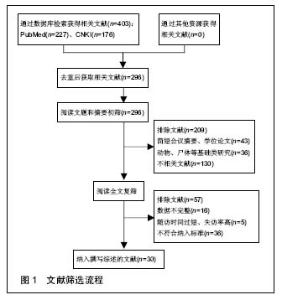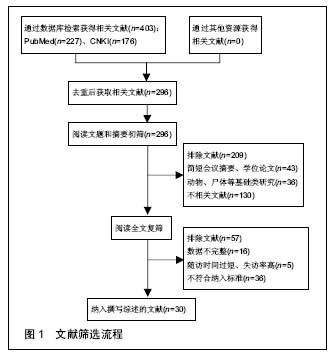Chinese Journal of Tissue Engineering Research ›› 2017, Vol. 21 ›› Issue (3): 440-444.doi: 10.3969/j.issn.2095-4344.2017.03.021
Previous Articles Next Articles
Application and thinking of nucleus replacement, total disc replacement and posterior lumbar dynamic stabilization device for lumbar degenerative diseases
Liu Fu-qian, Liang Wei-guo, Ye Dong-ping
- Guangzhou Red Cross Hospital, Medical College, Jinan University, Guangzhou 510220, Guangdong Province, China
-
Online:2017-01-28Published:2017-03-14 -
Contact:Liang Wei-guo, Master, Chief physician, Guangzhou Red Cross Hospital, Medical College, Jinan University, Guangzhou 510220, Guangdong Province, China -
About author:Liu Fu-qian, Studying for master’s degree, Guangzhou Red Cross Hospital, Medical College, Jinan University, Guangzhou 510220, Guangdong Province, China -
Supported by:the Natural Science Foundation of Guangdong Province, No. 2015A030313736; a grant from the Department of Technology of Guangdong Province, No. 2013B021800070
CLC Number:
Cite this article
Liu Fu-qian, Liang Wei-guo, Ye Dong-ping. Application and thinking of nucleus replacement, total disc replacement and posterior lumbar dynamic stabilization device for lumbar degenerative diseases[J]. Chinese Journal of Tissue Engineering Research, 2017, 21(3): 440-444.
share this article

2.2 髓核置换 髓核置换的目标是用生物力学性能与正常髓核相似的材料来置换病变的或缺损的髓核组织,恢复与健康椎间盘相似的正常结构和功能特性。主要适用于因腰椎退变性间盘疾病造成活动严重受限,保守治疗6个月以上无效的骨成熟的患者;影像学资料显示间盘高度丢失10%-50%,纤维环完整,间盘高度大于5 mm,没有Schmorl结节[5-6]。 目前被广泛应用的人工髓核是PDN-SOLO装置,核心的水凝胶共聚物能够被塑形成与间盘髓核切除后形成空腔相似的大小和形状,外部限制性外壳由高分子量聚乙烯松散编织而成。这个装置吸水塑形以提供对椎间隙的支撑,从而间盘高度的恢复,并参与分散机械负荷。赵亮等[7]报道65例4年的随访结果,主要并发症为术后 3 d出现一过性腰痛24例,1-3个月内假体脱出3例,39例出现软骨终板损伤,32例出现假体下沉。另外,值得关注的是Selviaridis等[6]报道了10例PDN置换治疗下腰痛患者的临床结果:严格按照适应证范围选择患者,行PDN植入后,随访8年,临床相关并发症肺血栓形成1例,假体被挤出1例;大多数患者疼痛显著缓解,并长期较好疗效,无症状性相邻节段退变发生。因此,应慎重开展此项手术,严格把握手术适应证。 2.3 全椎间盘置换 全椎间盘置换目的是保留脊柱节段活动,以克服融合技术的缺陷。适应证主要为:①腰椎椎间盘源下腰痛;②腰椎融合后邻近节段不稳定;③腰椎间盘切除后腰痛综合征。适应证的选择决定了术后临床效果。 目前所用的腰椎人工椎间盘基本由3部分组成,中间为髓核,两边为金属终板。而不同之处表现在:Charite假体,其聚乙烯核可以在两终板间自由活动;Prodisc假体,其髓核是固定在下方终板上的,此假体可以通过微创方法植入。Rao等[8]报道了Meta分析结果:在2年随访期间,全椎间盘置换 是安全有效的,术后全椎间盘置换组的视觉模拟评分和Oswestry功能障碍指数明显优于腰椎融合组;但没有证据证明全椎间盘置换术后运动保留的好处、长期并发症优于融合手术。循证医学证据揭示全椎间盘置换存在的问题[4,9-10]:①患者选择方面:单节段与多节段椎间盘置换的适应证有争议;②关于患者年龄的选择:无明确结论,但老年人并发症及死亡率高;③置入节段活动度保留:是否假体活动度大,临床效果好;④是否能防止相邻节段退变,毕竟有不少研究表明相邻节段退变不是由运动节段融合单独造成,其病因很可能是多因素的;⑤异位骨化、自发融合问题。虽然全椎间盘置换的近期疗效较好,但目前还缺少大样本远期临床疗效随访报道,相关并发症也是必须考虑的问题。 2.4 腰椎后路动态稳定技术 2.4.1 棘突间固定系统 Wallis系统:Wallis系统作为棘突间“缓冲器”,能够撑开关节突、降低间盘内压,并减少节段异常活动,以尽量保护节段的解剖结构。Wallis系统已被应用于以下适应证[11]:①椎间盘突出(行椎间盘切除);②轻度腰椎管狭窄症;③椎间盘功能障碍或退变性间盘疾病;④腰椎融合节段的相邻节段轻度退变而尚未达到需减压融合程度的病例;⑤需避免长节段减压固定的腰椎跳跃性节段病变病例。整个Wallis棘突间内植物通过脊柱后方结构载荷的分享作用,可为病变节段提供稳定性,同时维持活动。Li等[12]通过生物力学研究表明,患者23例手术节段为L4/5,Wallis组中的患者头侧邻近节段L3/4的刚度比PLIF组显著增加,L5/S1段的刚度在两组之间无显著差异,从而Wallis系统对头侧邻近节段具有保护作用。Senegas等[13]报道了133例长达13年的临床疗效评价,证实该装置提供了良好临床效果,表明该系统应用的安全性和有效性,可有效延缓相邻节段退变进展以及接受融合器置入的时间。Sandu等[14]对15例行Wallis治疗腰椎管狭窄患者进行了回顾性分析:表明选择正确尺寸的植入物是术后获得良好临床效果的基础。显然,在治疗腰椎退行性疾病中,Wallis固定是对现有手术技术的一项非常有价值的补充。 Coflex系统:Coflex装置是一种U形棘突间内植物,后伸时可压缩且容许前屈,能减少间盘应力。主要适用于腰椎椎管狭窄的患者。Coflex装置的植入节段主要为L3/4及L4/5,植入后轻度撑开小关节,椎间孔高度得以改善及维持,下腰痛得以缓解。王振林等[15]对比观察Coflex与后路融合固定治疗L4、5椎管狭窄症,随访4年得出结论:与融合固定相比,Coflex系统治疗腰椎管狭窄症可获得类似的中期临床疗效;Coflex组的影像学相邻节段退变发生率为20.0%,融合组为45.5%,可见其在减少相邻节段退变方面具有一定优势。另外,Xu等[16]对131例Coflex手术治疗的患者进行临床随访,其中11例患者出现相关并发症,如:棘突骨折、固定翼断裂、Coflex装置松动、硬脑膜破裂等,经相应保守治疗均取得良好的效果,显示了低并发症率和再手术率。Coflex棘突间动态固定系统应用于LDD是有效和相对安全的,但选用时需考虑其并发症的风险[11];同时,中长期临床随访证明Coflex与融合术相结合治疗两节段腰椎疾病减少了相邻节段退变的发生率[17]。可见,Coflex动态固定装置至少为一部分患者提供了一种可供选择的方法。 2.4.2 经椎弓根固定的动态后路装置 Graf韧带:为无弹性环状韧带结构,联合椎弓根螺钉使用,通过产生张力起到固定作用,维持腰椎生理性前凸,并限制脊柱前屈和后方小关节旋转。Graf韧带系统的缺点是可以导致侧隐窝狭窄和产生神经根卡压,另外,其不能限制后伸,加重了后方结构的载荷[18]。Choi等报道了一项8年以上的临床随访结论:Graf韧带可导致后方关节突退变加快[19]。Nagano等[20]报道两例失败Graf韧带植入的案例:两名患者因有腰椎节段不稳或椎间孔缩小所引起的腰腿痛症状,于术后2年进行椎间融合治疗,疼痛得到显著缓解,因此,建议用椎间融合治疗失败的Graf治疗案例。 Dynesys系统:Dynesys脊柱系统( dynamic neutralization system,动态中和系统)由钛螺丝钉、PCU弹性套管和PET弹性绳组成,弹性绳本身可产生一定的张力,弹性套管可对抗压缩力。生物力学研究证明Dynesys系统有效地分担了脊柱节段的负荷[21],释放了能量;同时,可以很好地限制固定节段并为之保留有限屈伸范围,减少椎间盘及小关节的应力,可克服Graf韧带系统加重纤维环后方和小关节负荷的缺陷。Fay等[22]对Dynesys内固定术后患者进行了临床评估,在38例腰椎管狭窄症患者中,24例合并腰椎滑脱,另14例没合并,平均随访(41.4±6.9)个月后作出结论:椎板切除结合Dynesys内固定用于腰椎椎管狭窄症能得到显著的疗效,无论是否合并腰椎滑脱,Dynesys均提供了类似的影像学稳定性和临床效果。Hoppe等[23]报道了39例7年回顾结果:患者因腰椎滑脱行L4/5单节段植入Dynesys系统,因症状性相邻节段退变(6例)、晚发性感染(1例)、螺钉断裂(1例)并发症的再手术率为21%,出现4例无症状的螺钉松动,腰腿症状改善率达85%以上,能延缓影像学与临床症状相邻节段退变的进展速率,患者满意度高。Dynesys系统应用于单节段、多节段腰椎间盘突出症可达到与PLIF相似的短期疗效,并且有利于手术节段椎间盘恢复以及减缓相邻节段退变[24-25]。所以,Dynesys在治疗腰椎管狭窄及腰椎失稳、腰椎间盘突出方面可能成为替代其他稳定装置的技术。 Bioflex系统:Bioflex是一个由椎弓根螺钉和弹性棒组成的脊柱弹性内固定系统,适用于腰骶椎滑脱、椎管狭窄、退变性畸形等腰椎退行性疾病的后路内固定。相当多的研究揭示Bioflex可以实现腰椎的稳定性[26-28],同时保持固定节段的一些活动度;降低发生相邻节段退变的风险;与椎间融合内固定结合适用于治疗多节段腰椎退行性疾病,并提高融合率。陈政等[29]回顾性分析Bioflex系统治疗腰椎退行性疾病的情况:平均随访(22.6±2.1)个月,表明它的应用在很大程度上减少了疼痛,改善了功能,而且体现了该植入物的临床安全性。下腰椎置入Bioflex的有限元分析表明:固定与邻近节段活动与椎板减压范围大小的关系不大[30],而邻近节段关节突应力及髓核间应力随椎板减压范围的增大呈增大的趋势,这有利于在应用Bioflex手术时进行优化设计。但是,与融合相比有没有更有意义的远期优越性呢?这套装置能满足各种患者吗?这些问题只有通过长期细致的观察研究来得出结论。"

| [1] Xia XP, Chen HL, Cheng HB. Prevalence of adjacent segment degeneration after spine surgery: a systematic review and meta-analysis. Spine (Phila Pa 1976). 2013;38(7):597-608.[2] Maruenda JI, Barrios C, Garibo F, et al. Adjacent segment degeneration and revision surgery after circumferential lumbar fusion: outcomes throughout 15 years of follow-up. Eur Spine J. 2016;25(5):1550-1557.[3] Helgeson MD, Bevevino AJ, Hilibrand AS. Update on the evidence for adjacent segment degeneration and disease. Spine J. 2013;13(3):342-351.[4] Saavedra-Pozo FM, Deusdara RA, Benzel EC. Adjacent segment disease perspective and review of the literature. Ochsner J. 2014;14(1):78-83.[5] Boswell MV, Trescot AM, Datta S, et al. Interventional techniques: evidence-based practice guidelines in the management of chronic spinal pain. Pain Physician. 2007; 10(1):7-111.[6] Selviaridis P, Foroglou N, Tsitlakidis A, et al. Long-term outcome after implantation of prosthetic disc nucleus device (PDN) in lumbar disc disease. Hippokratia. 2010;14(3): 176-184.[7] 赵亮,瞿东滨,陈建庭,等.腰椎间盘人工髓核置换并发症原因分析及预防策略(附4年随访报道)[J].中国矫形外科杂志,2007,15(5): 331-333.[8] Rao MJ, Cao SS. Artificial total disc replacement versus fusion for lumbar degenerative disc disease: a meta-analysis of randomized controlled trials. Arch Orthop Trauma Surg. 2014;134(2):149-158.[9] Zindrick MR, Tzermiadianos MN, Voronov LI, et al. An evidence-based medicine approach in determining factors that may affect outcome in lumbar total disc replacement. Spine (Phila Pa 1976). 2008;33(11):1262-1296.[10] 海涌.腰椎非融合技术的应用与思考[J].中国脊柱脊髓杂志,2014, 24(10):867-868.[11] 孙浩林,李淳德,刘宪义,等.棘突间动态稳定系统治疗腰椎退变性疾病的并发症分析[J].中华外科杂志,2013,51(1):35-39.[12] Li CD, Sun HL, Lu HZ. Comparison of the effect of posterior lumbar interbody fusion with pedicle screw fixation and interspinous fixation on the stiffness of adjacent segments. Chin Med J (Engl). 2013;126(9):1732-1737.[13] Senegas J, Vital JM, Pointillart V, et al. Clinical evaluation of a lumbar interspinous dynamic stabilization device (the Wallis system) with a 13-year mean follow-up. Neurosurg Rev. 2009;32(3):335-341.[14] Sandu N, Schaller B, Arasho B, et al. Wallis interspinous implantation to treat degenerative spinal disease: description of the method and case series. Expert Rev Neurother. 2011; 11(6):799-807.[15] 王振林,黄培培,焦海斌,等.Coflex与融合治疗腰椎管狭窄症的中期疗效及对相邻节段退变影响的对比观察[J].中国矫形外科杂志,2016,24(1):24-29.[16] Xu C, Ni WF, Tian NF, et al. Complications in degenerative lumbar disease treated with a dynamic interspinous spacer (Coflex). Int Orthop. 2013;37(11):2199-2204.[17] Chen XL, Guan L, Liu YZ, et al. Interspinous dynamic stabilization adjacent to fusion versus double-segment fusion for treatment of lumbar degenerative disease with a minimum follow-up of three years. Int Orthop. 2016;40(6):1275-1283.[18] 刘鹏,李瓦里.非融合内固定治疗腰椎退行性疾病的临床应用[J].中国组织工程研究与临床康复,2010,14(22):4070-4073.[19] Choi Y, Kim K, So K. Adjacent segment instability after treatment with a Graf ligament at minimum 8 years' follow up. Clin Orthop Relat Res. 2009;467(7):1740-1746.[20] Nagano A, Miyamoto K, Nishimoto H, et al. Transforaminal lumbar interbody fusion for failed Graf ligamentoplasty: a report of two cases. J Orthop Surg (Hong Kong). 2009;17(2): 220-222.[21] Chien CY, Kuo YJ, Lin SC, et al. Kinematic and mechanical comparisons of lumbar hybrid fixation using Dynesys and Cosmic systems. Spine (Phila Pa 1976). 2014;39(15): E878-E884.[22] Fay LY, Wu JC, Tsai TY, et al. Dynamic stabilization for degenerativ e spondylolisthesis: evaluation of radiographic and clinical outcomes. Clin Neurol Neurosurg. 2013;115(5): 535-541.[23] Hoppe S, Schwarzenbach O, Aghayev E, et al. Long-term Outcome After Monosegmental L4/5 Stabilization for Degenerative Spondylolisthesis With theDynesys Device. Clin Spine Surg. 2016;29(2):72-77.[24] Wang Q, Liu J, Shi Y, et al. Short-term effects of a dynamic neutralization system (Dynesys) for multi-segmental lumbar disc herniation. Eur Spine J. 2016;25(5):1409-1416.[25] 杨兵,江庭彪.动态中和系统与后路腰椎椎间融合治疗腰椎退行性变的比较研究[J].中国修复重建外科杂志,2013,27(2): 140-144.[26] Kim YS, Zhang HY, Moon BJ, et al. Nitinol spring rod dynamic stabilization system and Nitinol memory loops in surgical treatment for lumbar disc disorders:short-term follow up. Neurosurgical Focus. 2007;22(1):E10.[27] Yang JS, Cho YJ, Kang SH, et al. Dynamic radiographic results of different semi-rigid fusion devices for degenerative lumbar spondylolisthesis: "dynamic rod" vs. "dynamic screw head". Turk Neurosurg. 2016;26(2):268-273.[28] 肖文德,郭东明,温世峰,等.Bioflex动态稳定系统治疗腰椎退行性疾病的临床疗效[J].中国矫形外科杂志,2014,21(11):1160-1163.[29] 陈政,彭宝淦,李永超,等.Bioflex系统治疗腰椎退行性疾病的临床疗效研究[J].中华医学杂志,2014,94(43):3439-3442.[30] 李长树,谢景开,白宇哲,等.不同椎板减压范围对BioFlex系统生物力学的影响[J].中国脊柱脊髓杂志,2014,24(4):372-378. |
| Viewed | ||||||
|
Full text |
|
|||||
|
Abstract |
|
|||||

